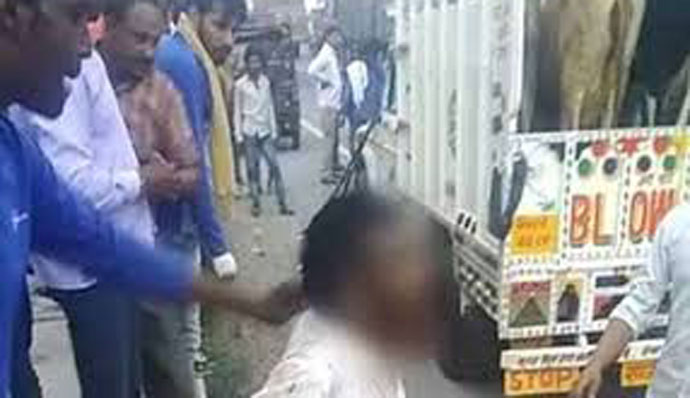Was lynching and crime Modi's ultimate vision of India?

Much has been said about how little crime happens in India. But statistics can be misleading. The most reported crimes often involve important people, groups or parties. Influential people often get away with murder, literally. Take the incidents between dangerous criminals and the police or paramilitary. Movies have been made on such incidents.
Take the case of the infamous Gujarat liquor baron of the 1970s and 1980s, Abdul Latif. With prohibition drying up alcohol consumption and hitting availability of liquor, bootlegging became a profitable business. But Latif fell out with important politicians who ordered that he be removed. The Gujarat Police gunned down the bootlegger in cold blood. The recent Bollywood film Raees starring Shah Rukh Khan is said to be based on the Abdul Latif story.
Then there is the story of a notorious dacoit who threatened to kill the controversial Congress leader, Sanjay Gandhi. The dacoit, Sunder, was captured by the Delhi Police, and reportedly forcibly drowned in the Jamuna. By sheer coincidence I got to know the story from one of the people involved. Such instances are common, and fairly common since there is a fair amount of crime, as the media keeps pointing out.
The anti-Sikh riots in Delhi in November-December 1984, were largely organised by the Congress as a reaction to the murder of Indira Gandhi. Some 2,000 Sikhs were killed. Some resettlement colonies like Trilokpuri were badly hit with more than 300 dead and many wounded. Ironically, the Sikhs there were Labana Sikhs, not Punjabi Sikhs. They had nothing to do with the Khalistanis. Yet they were butchered. The Delhi Police barely intervened to save the Sikhs, many of whom had tyres forcibly put around their necks and were then burnt. Many Delhites were witnesses to these horrific events. The rioters had lists of addresses and residents who were Sikhs, whom they then targeted.
There were several cases against Congress leaders and other rioters. But there were relatively fewer convictions. Justice was neither done nor seen to be done. Several court cases are still going on. Significantly, the Sangh Parivar did not participate in the anti-Sikh riots, and tried to save the Sikhs. Their support to the Sikhs impacted the collapse of their historically marginal support in the coming Lok Sabha elections.
A more serious crime is communal violence. After the demolition of the Babri Masjid in Ayodhya on December 6, 1992, there were extremely violent post-Ayodhya riots in Mumbai and Surat. The Justice Srikrishna Commission report named important politicians and parties involved in the Mumbai riots. Virtually no action was taken. In Surat too, there was little remedial action. Hundreds of innocents died, but virtually no action.

These examples are cited to put in context cow vigilantism and mob lynching of Muslims who are wrongly accused of eating beef or slaughtering cow. These incidents whether in Uttar Pradesh, Jharkhand, Jammu and especially other states, are criminal but fuelled by politics.
The Sangh Parivar needs issues to strengthen their political base. Demonetisation has failed. Currently traders and consumers are fairly unhappy with the GST. Secular universities are under attack. Unemployment continues to rise. The Modi slogan “Make in India” is more truly “Make-believe in India.” Despite everything the economy is not booming.
So, why such optimistic news? Because of the Modi government pressure on the media.
That’s why NDTV was attacked on the basis of a weak, old case by a disgruntled employee which accused the channel’s owners of benefitting from concessions from the ICICI Bank. The bank had no complaint.
All thinking people should contrast their own information and experience of the economy, against the government of India statistics. Obviously, a lot of information is biased. Thus, gimmicks and political stunts to create false images and information.
All types of crimes discussed above are rising or will rise. Cumulatively they amount to an assault on democratic institutions and rights. Indians faced and repulsed the national Emergency of June 1975 to March 1977. Such incidents should not be allowed to be repeated at any time, at any cost.
All citizens must remember the famous dictum — “Eternal vigilance is the price of liberty".

